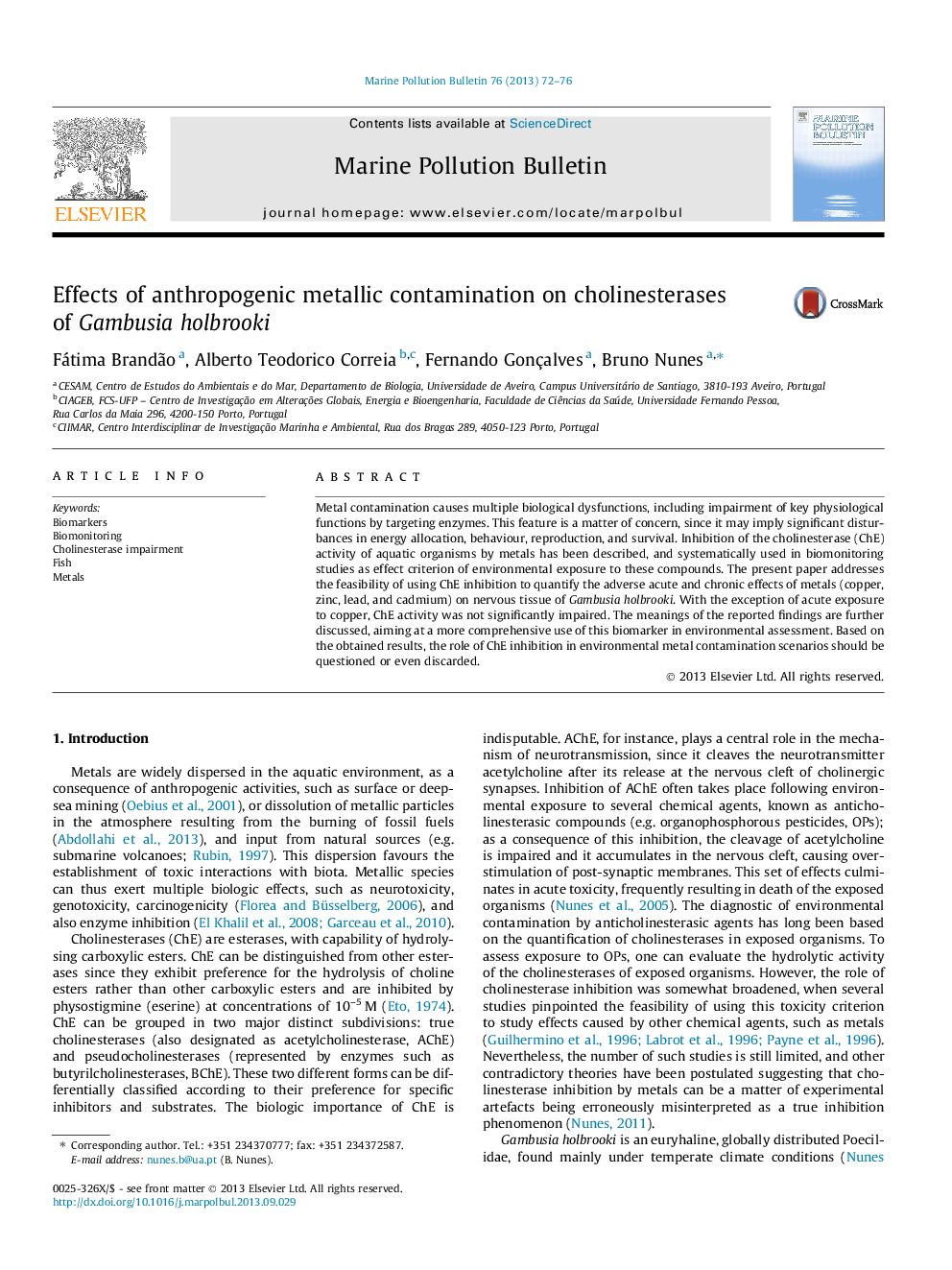| Article ID | Journal | Published Year | Pages | File Type |
|---|---|---|---|---|
| 6359068 | Marine Pollution Bulletin | 2013 | 5 Pages |
Abstract
Metal contamination causes multiple biological dysfunctions, including impairment of key physiological functions by targeting enzymes. This feature is a matter of concern, since it may imply significant disturbances in energy allocation, behaviour, reproduction, and survival. Inhibition of the cholinesterase (ChE) activity of aquatic organisms by metals has been described, and systematically used in biomonitoring studies as effect criterion of environmental exposure to these compounds. The present paper addresses the feasibility of using ChE inhibition to quantify the adverse acute and chronic effects of metals (copper, zinc, lead, and cadmium) on nervous tissue of Gambusia holbrooki. With the exception of acute exposure to copper, ChE activity was not significantly impaired. The meanings of the reported findings are further discussed, aiming at a more comprehensive use of this biomarker in environmental assessment. Based on the obtained results, the role of ChE inhibition in environmental metal contamination scenarios should be questioned or even discarded.
Keywords
Related Topics
Physical Sciences and Engineering
Earth and Planetary Sciences
Oceanography
Authors
Fátima Brandão, Alberto Teodorico Correia, Fernando Gonçalves, Bruno Nunes,
